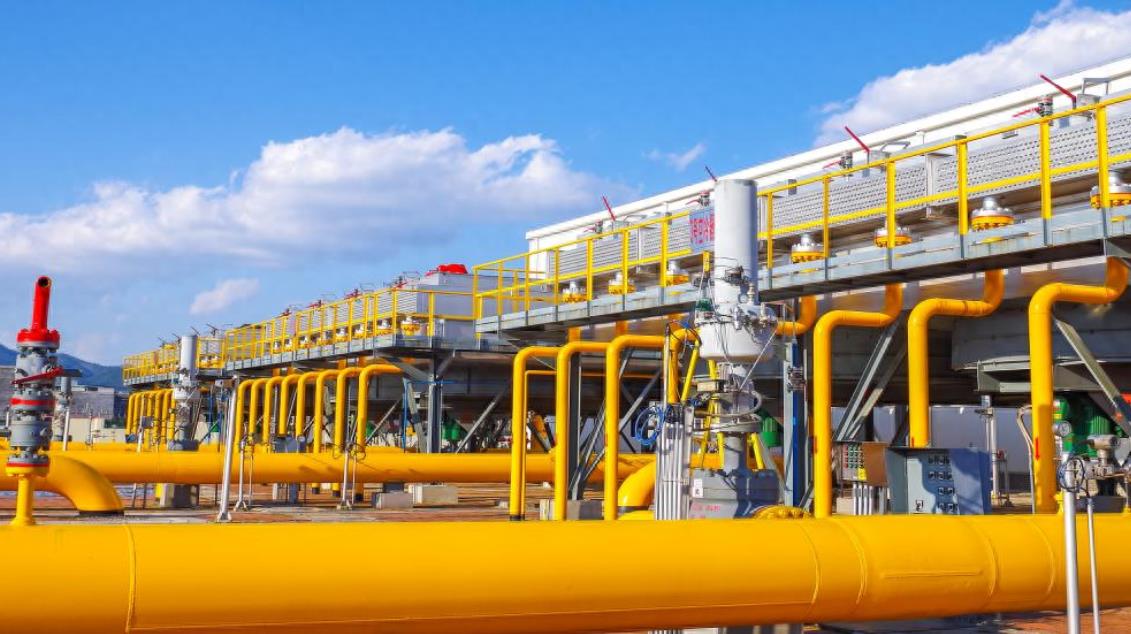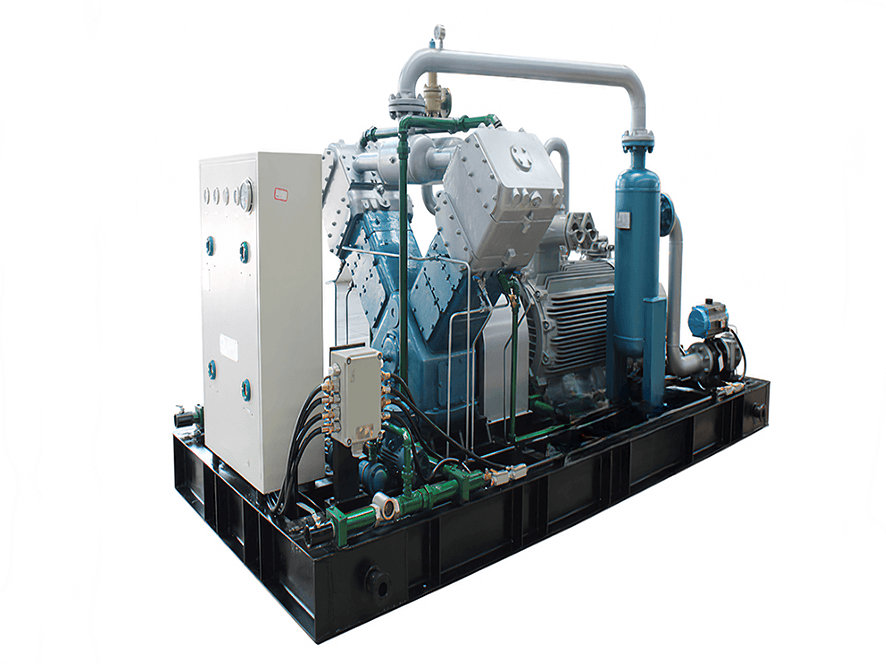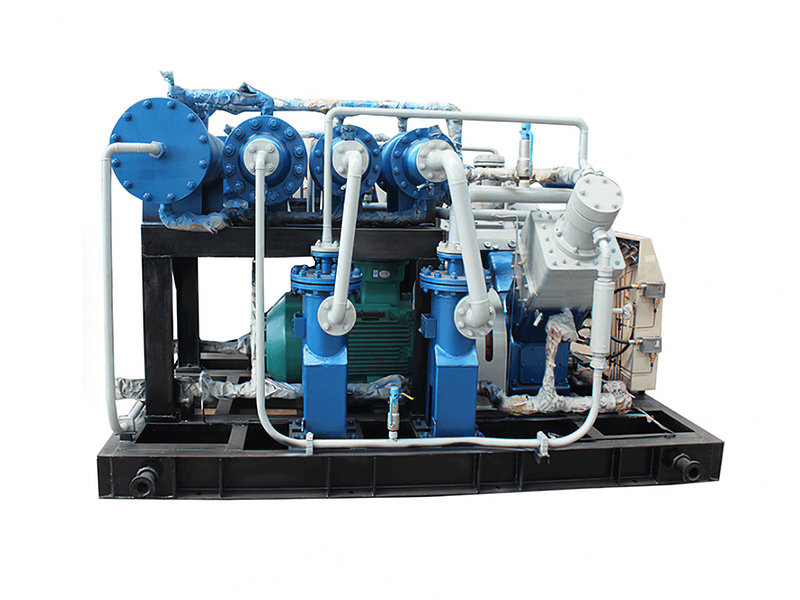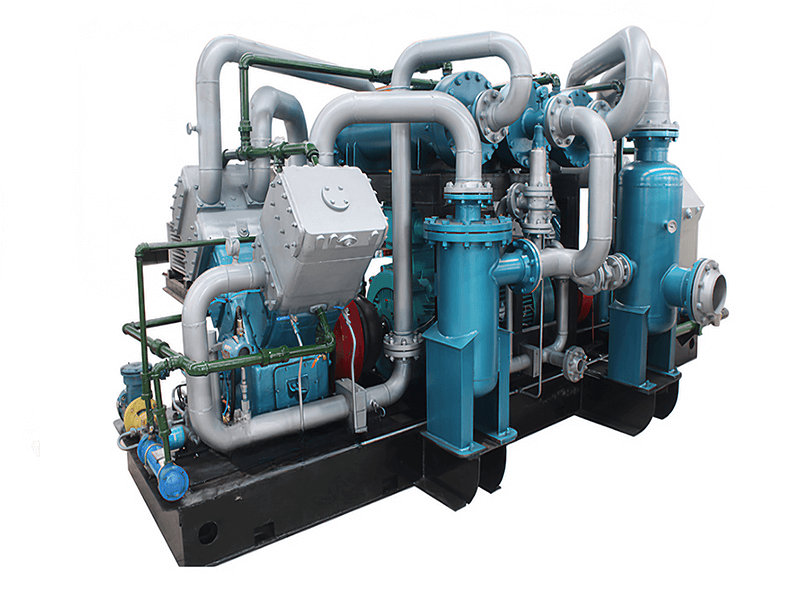Different types of butadiene compressors may have varying configurations and components based on their design and operational requirements. However, here are some common components you may find in different types of butadiene compressors:
1. Compressor Motor: The motor provides the power to drive the compressor and is typically an electric motor.
2. Compressor Unit: This includes the main body of the compressor, which houses various components and is responsible for compressing the butadiene gas.
3. Compressor Cylinder(s): The cylinder(s) are where the compression of butadiene gas takes place. The number of cylinders can vary depending on the compressor design.
4. Pistons: Pistons are reciprocating components that move inside the cylinders to compress the butadiene gas. They are connected to the crankshaft and convert the linear motion into rotational motion.
5. Crankshaft: The crankshaft converts the linear motion of the pistons into rotational motion, which is then transferred to the compressor motor.
6. Valves: Valves control the flow of butadiene gas into and out of the cylinders during the compression process. Common types of valves used in compressors include suction valves and discharge valves.
7. Lubrication System: Compressors often have a lubrication system to provide lubrication to moving parts such as pistons, cylinders, and bearings. This system helps reduce friction and ensure smooth operation.
8. Cooling System: Butadiene compressors may incorporate a cooling system to manage the heat generated during compression. This can include components like coolers or heat exchangers to remove excess heat from the compressed gas.
9. Safety Devices: Compressors may have safety devices such as pressure relief valves to protect against overpressure conditions and ensure safe operation.

10. Control and Monitoring System: Modern compressors often include a control and monitoring system that allows operators to monitor performance parameters, adjust settings, and ensure safe and efficient operation of the compressor.
11. Intercoolers: Intercoolers are heat exchange devices used to cool the compressed butadiene gas between stages in multi-stage compressors. They help reduce the temperature and improve the efficiency of compression.
12. Discharge Piping: The discharge piping transports the compressed butadiene gas from the compressor to the downstream system or storage. It is designed to withstand high pressures and may include fittings, valves, and instrumentation.
13. Filtration System: Compressors often have filtration systems to remove impurities, moisture, and contaminants from the butadiene gas before compression. This helps protect the compressor components and maintain the quality of the gas.
14. Instrumentation and Control Devices: These include pressure gauges, temperature sensors, flow meters, and other instruments that provide real-time data on the operating conditions of the compressor. They help monitor and control the performance and safety of the compressor.
15. Foundation and Mounting: The compressor is typically mounted on a foundation or baseplate to provide stability and reduce vibration during operation. Proper mounting is crucial for maintaining alignment and ensuring reliable operation.
16. Sealing System: Compressors may have sealing systems to prevent leakage of butadiene gas from the compression chamber. This can include piston rings, labyrinth seals, and other types of sealing elements.
17. Drive System: The drive system transfers power from the motor to the compressor. It can include components such as belts, gears, couplings, or direct drive mechanisms, depending on the compressor design.
18. Control Panels: Control panels house the electrical controls, switches, and indicators for operating and monitoring the compressor. They provide a centralized interface for the operator to control and monitor the compressor's performance.
It's important to note that the specific components and their configurations can vary based on the compressor manufacturer, design, and application requirements. When selecting or maintaining a butadiene compressor, it's crucial to refer to the manufacturer's documentation and guidelines to ensure proper operation, maintenance, and safety of the equipment.
Maintenance of Butadiene Compressor
Proper maintenance of a butadiene compressor is essential to ensure its reliable and efficient operation. Here are some key maintenance practices for a butadiene compressor:
1. Regular Inspection: Conduct routine visual inspections of the compressor to check for any signs of wear, leaks, loose connections, or abnormal conditions. Inspect components such as valves, fittings, seals, and belts for proper functioning and tightness.
2. Lubrication: Follow the manufacturer's recommendations for lubrication intervals and use the recommended lubricants for the compressor. Regularly check lubrication levels and ensure that the lubrication system is functioning correctly. Monitor oil quality and perform oil analysis as needed to detect any contaminants or degradation.
3. Filter Maintenance: Keep the filtration system clean and replace filters according to the manufacturer's guidelines. This helps prevent contaminants from entering the compressor and ensures proper air or gas quality.
4. Cooling System Maintenance: If the compressor has a cooling system, inspect and clean the coolers or heat exchangers regularly. Ensure proper airflow and check for any blockages or buildup of debris that can impede cooling efficiency.
5. Valve Maintenance: Inspect and maintain the valves, including suction and discharge valves, as per the manufacturer's recommendations. Check for proper sealing, clean or replace valve plates if necessary, and ensure valves are operating smoothly.
6. Safety Device Inspection: Regularly test and inspect safety devices such as pressure relief valves to ensure they are functioning correctly. Verify that set pressures are within the specified range and that the devices respond appropriately to overpressure conditions.
7. Vibration and Alignment: Monitor and address excessive vibration in the compressor. Check the alignment of the compressor and motor components to ensure proper coupling and minimize undue stress on the equipment.
8. Monitoring System: Utilize the control and monitoring system of the compressor to monitor key parameters such as pressure, temperature, and operational data. Address any abnormal readings or trends promptly.
9. Regular Maintenance Schedule: Develop a maintenance schedule based on the manufacturer's recommendations and the specific operating conditions of the compressor. This may include periodic inspections, lubrication, filter replacement, and other maintenance tasks.
10. Training and Documentation: Ensure that personnel responsible for operating and maintaining the compressor are adequately trained on the equipment's maintenance procedures and safety protocols. Keep comprehensive records of maintenance activities, including inspections, repairs, and replacements.
It is important to note that the maintenance practices may vary depending on the specific type, model, and manufacturer of the butadiene compressor. Therefore, always refer to the manufacturer's guidelines and recommendations for the particular compressor model being used.


























